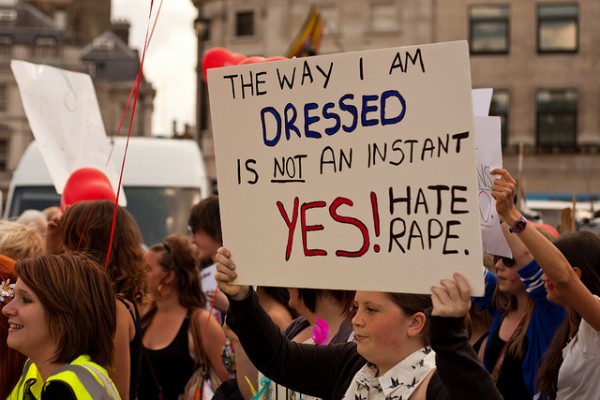
Originally published Sept. 13, 2016
Earlier this summer, a California judge sentenced Brock Allen Turner to 6 months in jail for the sexual assault of an unconscious 23-year-old woman because the judge believed a harsher punishment would “have a severe impact on him.” After Turner’s father referred to his son’s actions as “20 minutes of action,” the survivor detailed the emotional aftermath of her assault and the revictimization during trial in a powerful impact statement. This sentencing decision and subsequent defending of Turner because of his university status, lack of criminal history, and “positive character” continue to strike public outrage, as he was released from jail after serving 3 months. Feminist scholars have long addressed the pervasiveness of rape culture and help us pinpoint how it reproduces notions that only “bad guys” commit “real rape.”
Police and prosecutors often make decisions to arrest and charge suspects based upon characteristics of “real rape” – rapes that involve strangers, weapons, and physical force. These depictions of sexual assault suggest only “bad guys” rape and that victims must physically resist and show their injuries to prove it. Empirical studies illustrate that acquaintances perpetrate the vast majority of rapes and include little, if any, physical injury. Still, rape and sexual assault continue to be characterized by under-reporting and high attrition rates.
- Susan Estrich. 1987. Real rape. Cambridge, MA: Harvard University Press.
- Cassia Spohn and Katharine Tellis. 2014. Policing and Prosecuting Sexual Assault: Inside the Criminal Justice System. Lynne Reiner Publishers: Boulder, CO.
Some men convicted of rape deny their actions by portraying the victim as the true sexual aggressor and themselves as the victim. In one study, men argued that the victim said no when she really meant yes, initiated the sexual contact, and even enjoyed the sexual contact once she relaxed. Other men acknowledged their actions as rape but provided excuses, citing drugs and alcohol, emotional problems, and a brief lapse in judgement from their otherwise “nice guy” persona as the true source of the victim’s rape.
- Diana Scully and Joseph Marolla. 1984. “Convicted Rapists’ Vocabulary of Motive: Excuses and Justifications.” Social Problems 31(5): 530-544.
Perhaps one reason myths of the pathological rapist persist within the criminal justice system is the expectation that women and girls should accept sexual violence and aggression from men as normal in their everyday interactions. In a recent study, adolescent girls often described their experiences of harassment and sexual violence with men and boys as normal “because they do it to everyone.”
- C.J. Pascoe. 2007. Dude You’re a Fag: Masculinity and Sexuality in High School. Berkeley: University of California Press.
- Heather R. Hlavka. 2014. “Normalizing Sexual Violence: Young Women Account for Harassment and Abuse.” Gender & Society 28(3): 337-358.
For more on rape culture and its consequences, see this TROT on the revictimization of rape victims, this piece on pop music and rape culture, and these stats on rape and sexual assault in the U.S.

Comments